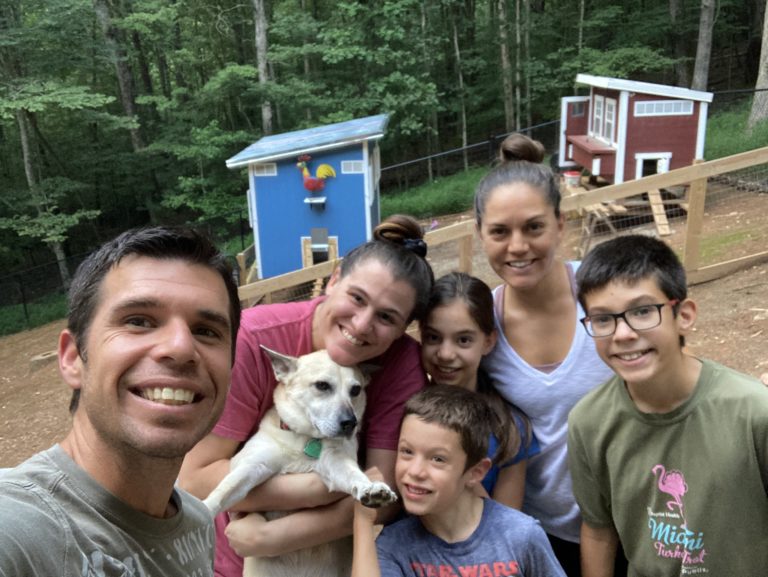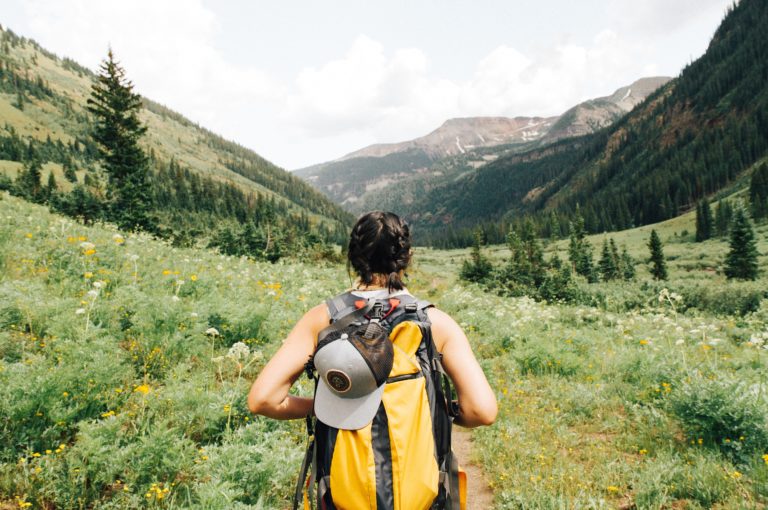Pace, Reflection, and Travel
Between the morning’s family-friendly hike around Trout Lake and the afternoon’s challenge trek to Sepulchre’s summit, we traveled through Yellowstone’s Lamar Valley. We knew this place well. At least, we knew it when it wore the colors of fall. But this was May, and it was far less familiar. Gone were the frayed grasses waving in the meadows, the high-pitched bugle of the sparring bull elk, the sleek frames of summer-fed bison. In their place, we found a hundred hues of green, playful marmots along the trail, and red dogs—spring bison babies born to winter-weary mothers.
Our whole family watched for the bison and elk we were certain to see and for the wolves and bears we hoped to spot. When I felt our vehicle decelerate, I searched the landscape for whatever my husband saw that was worth slowing down for.
A bison herd—a mix of cows, juveniles, and red dogs—was sprinkled about the meadow we were passing through. It wasn’t a massive herd. It wasn’t strewn across the road or even crossing in single file. But a couple of vehicles had stopped ahead of us, as well as a few in the oncoming lane, with a wide gap in between. No one had parked. No one had left his vehicle. Everyone was just sitting there.
Eventually, I saw a solitary red dog on the road. He was running—barreling would be more accurate—straight toward the front car in the oncoming lane. We watched, confused and curious. Something didn’t seem quite right. It was then I noticed the rangers. There were two of them, conferring near their National Park Service SUV parked between the snaking lines of stopped cars. Both looked grim.
Something was definitely not right.
When the rangers parted, one charged straight at the red dog and hazed it away from the sedan it was galloping toward. In a move lifted from a rodeo calf-roping contest, the tiny bison pivoted and ran at the vehicle ahead of us. The second ranger chased it off the road toward the herd grazing in the meadow. At this, it turned and sprinted straight at the rangers’ SUV. While one of them attempted to herd the red dog toward its kindred and the safety of the meadow, the other waved us on. In the rearview, I watched the baby bison return to the road, racing wildly toward approaching traffic.
The words willy and nilly came to mind.
Later, because we were at the Visitor Education Center and because I’m curious, I asked about it. Immediately, the ranger’s patient, professional countenance turned curt.
Here’s the short version: Some well-meaning, though misguided, park visitors had seen the baby bison and, believing it was lost and alone, managed to capture it, shove it into their vehicle, and deliver it to a ranger station. What we witnessed was the attempt to return it to a herd. No one knew if it was the right herd but orphaned calves are often accepted and adopted by bison mothers, so the attempt was made. But this calf had become confused—refusing to stay in the meadow, rejecting its kindred, returning to the road, racing from car to car. It hadn’t ended well.
No wonder the rangers looked grim.
About the lilies of the field, the birds of the air, and the God who created them all, Matthew Henry wrote this: “There is a great deal of good to be learned from what we see every day, if we would but consider it.” I may not see baby bison every day, but there’s good there to learn from. Because here’s the truth: that scene with the red dog isn’t entirely unfamiliar. I’ve seen a version of it in my own life. No matter how much I believe in pausing to ponder my path, that’s not how I naturally live. It’s easier for me to rush by agenda than walk by faith.
Maybe you can identify.
A year ago, my college kids’ pastor challenged his church with these words: “In the rush to reopen, don’t miss his Spirit. Don’t run past the work God is doing in you.” (Mark Vance) I’ve been considering those words ever since. Because, after the intensity of the past stretch of months, the temptation to rush is strong.
What if we’ve been missing out?
What we don’t want to miss is his Spirit. We don’t want to miss the work he’s doing in us.
God was at work in us—in me, in you—back in 2019. In 2020. And still in 2021. He’s always at work. Always doing new things. Always making ways in our wilderness and rivers in our deserts. The question he asks us is this: Do you not see it?
This is the real risk of rushing.
Because, no, sometimes we don’t see it. Sometimes we miss it. Sometimes we’re barreling around with an air of willy-nilly about us—running at the wrong things, heading in the wrong direction, following the wrong voice.
Still, we’re not without hope because, as Matthew Henry said, there’s that great deal of good for us to learn from the things we see in the everyday. Seeing everyday things isn’t all that tough. Slowing down to consider them, to receive the great good, though? That’s the challenge. The question is this: Are you up for it?







